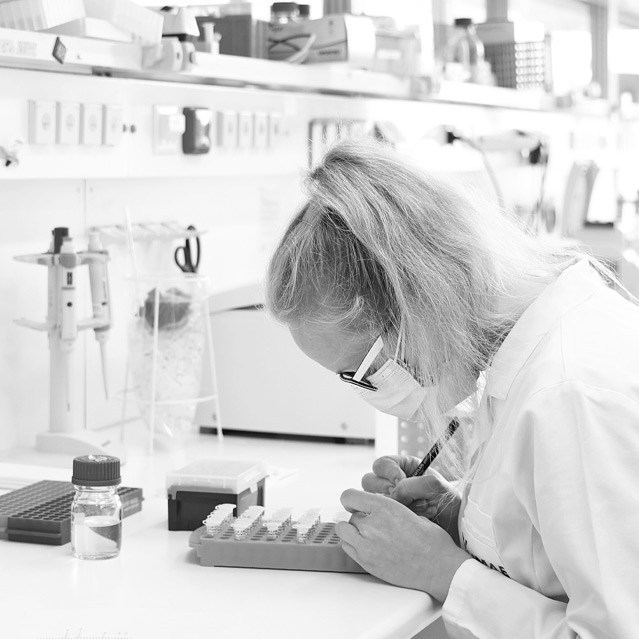Antibody
Humanization
Home » Antibody Humanization
Delivering humanized antibodies for safer drugs
YUMAB® discovery platform generates fully human antibodies closest to natural germline among those on the market. For nonhuman antibodies, YUMAB provides optimized bioinformatic humanization solutions to generate super-humanized antibody variants mimicking sequence characteristics close to fully human antibodies.
The combination of different discovery technologies is of importance to obtain monoclonal antibodies targeted against difficult antigens and rare functional epitopes. Advanced antibody lead optimization by AI-assisted bioinformatic modelling and in allows early derisking of potential development issues optimization of the sequences. This approach enables YUMAB to advance quickly from basic research to clinical translation.

Animal-derived
antibody
B-cells
Hybridoma
Ab sequences
Humanization
Humanized
Antibody
Two technologies for optimization of animal-derived antibodies
The YUMAB® humanization platform provides two technologies for the humanization of animal-derived antibodies of any source (B-cells, Hybridoma cultures, antibody sequences) by:
- AI-assisted CDR grafting
- Template-driven chain shuffling
AI-assisted CDR grafting
Goal:
Reduction of non-human amino acid residues to a minimum and preservation of the binding properties of the parental antibody.
Principle:
YUMAB’s proprietary AI-assisted in-silico humanization tool identifies non-human amino acids in the VH and VL framework regions and replaces those with human counterparts by minimizing interferences in the overall antibody conformation. Usually, for each domain different degrees of humanization are aimed (low, medium and high). Simultaneously, unwanted motifs (PTM, hydrophobic patches) can be removed. The optimized VH and VL sequence variants are combined individually with each other and produced in the final antibody format by mammalian cells. To identity functional antibodies with highest humanness, the antibody binding characteristics and biochemical properties are measured and correlated with the human germline identity.